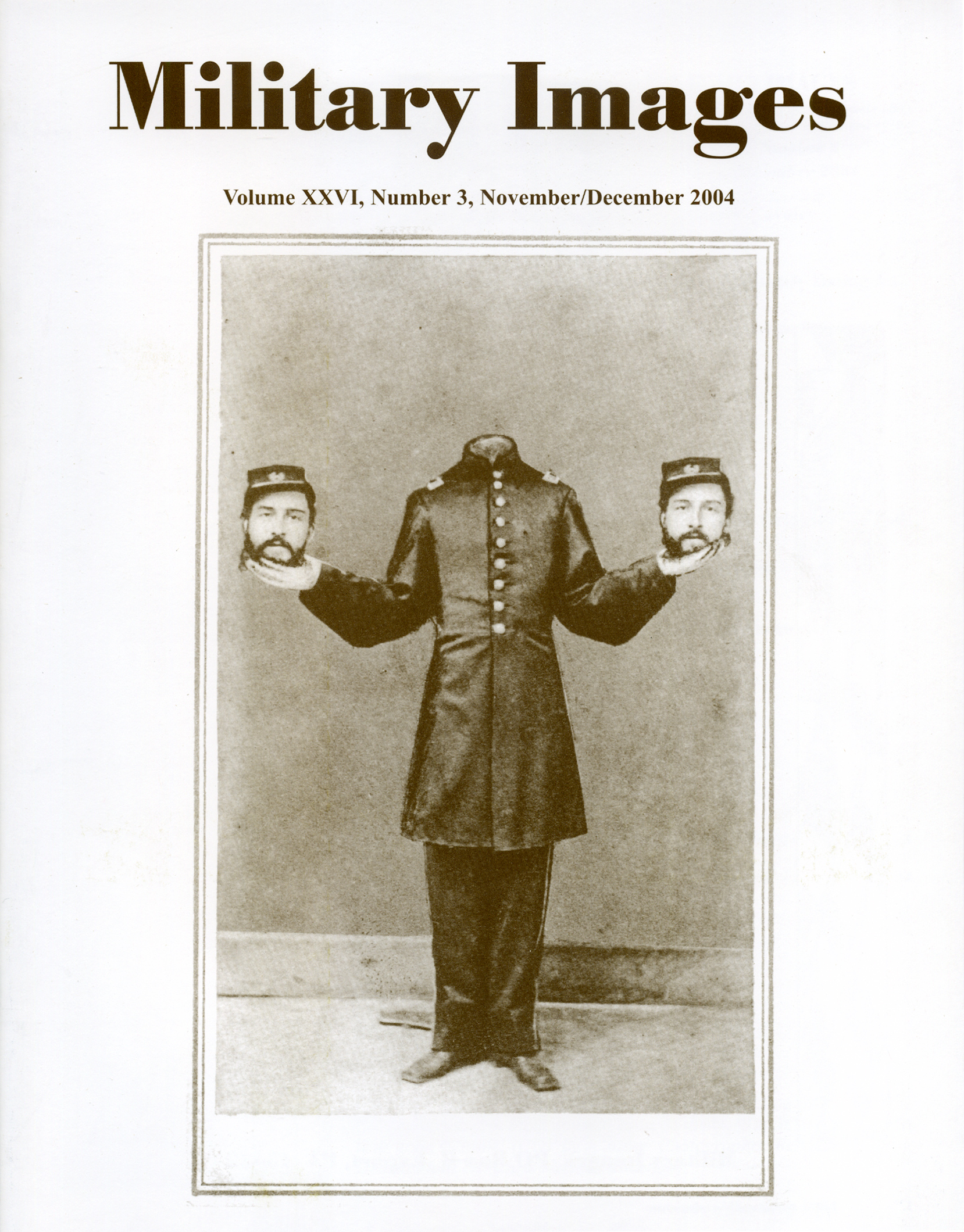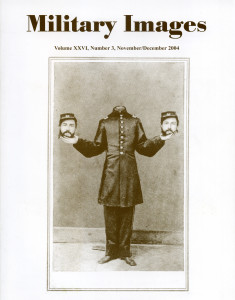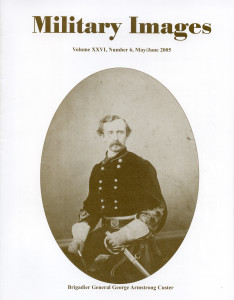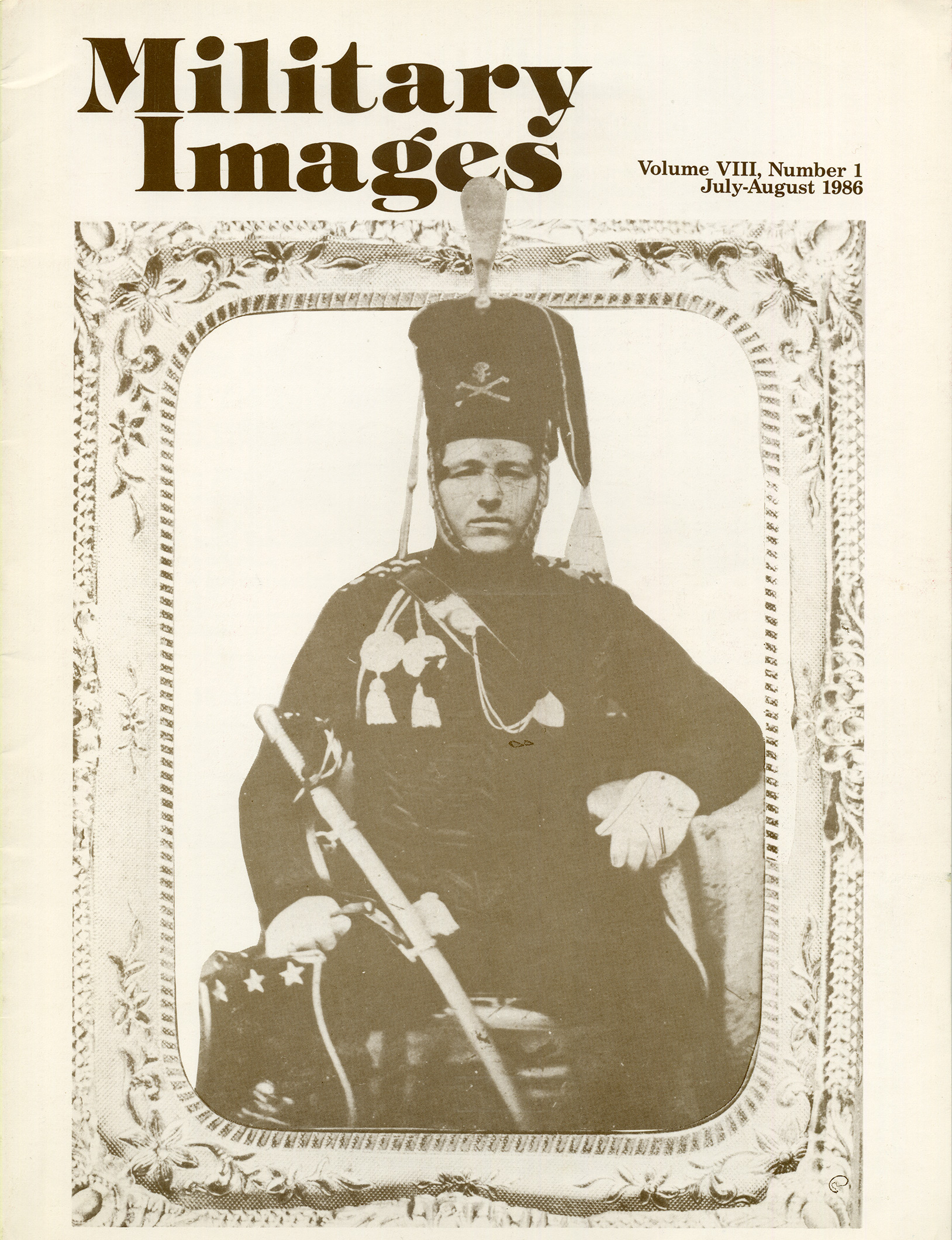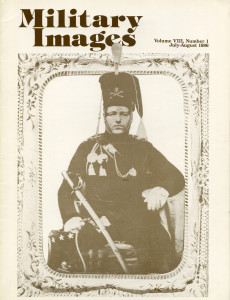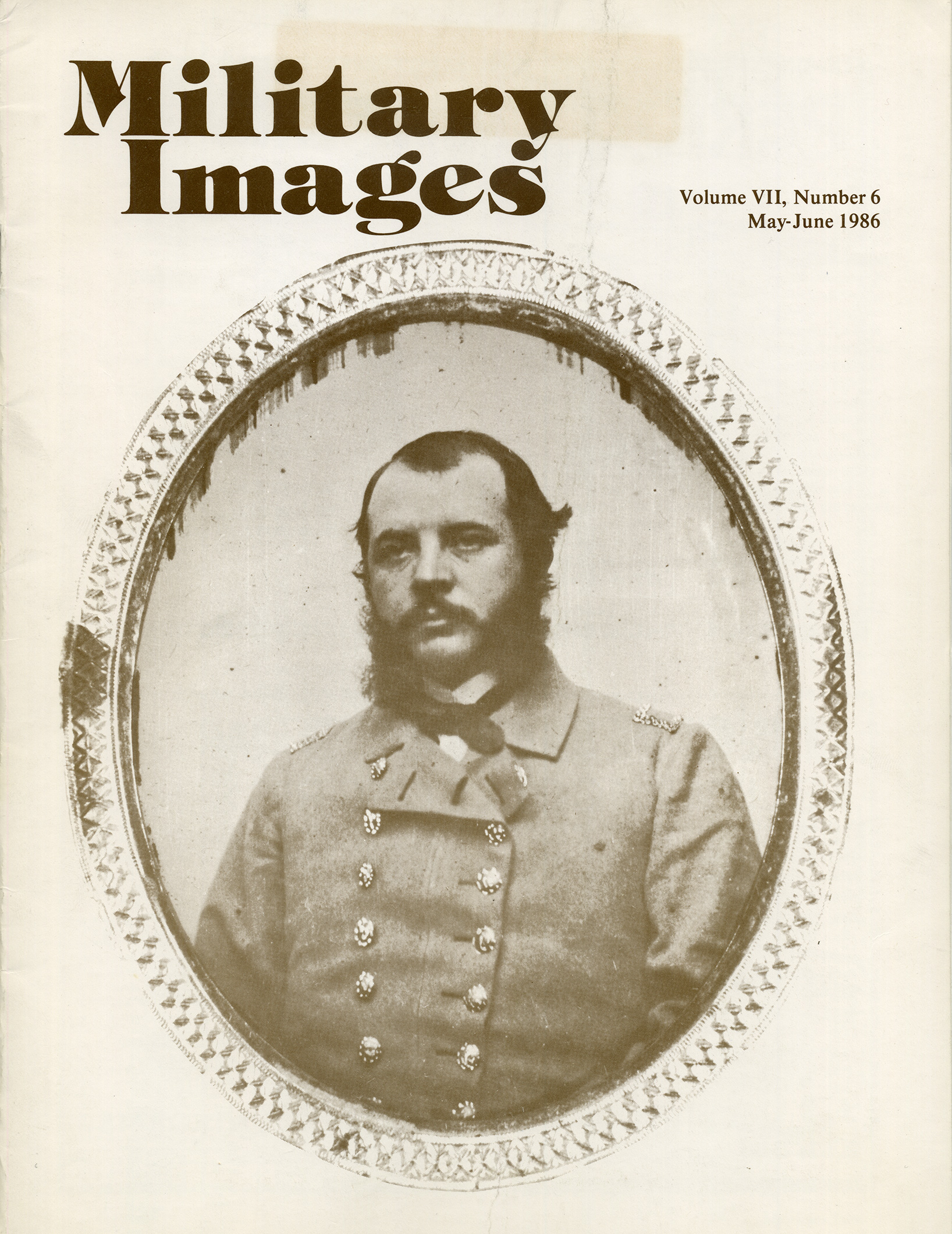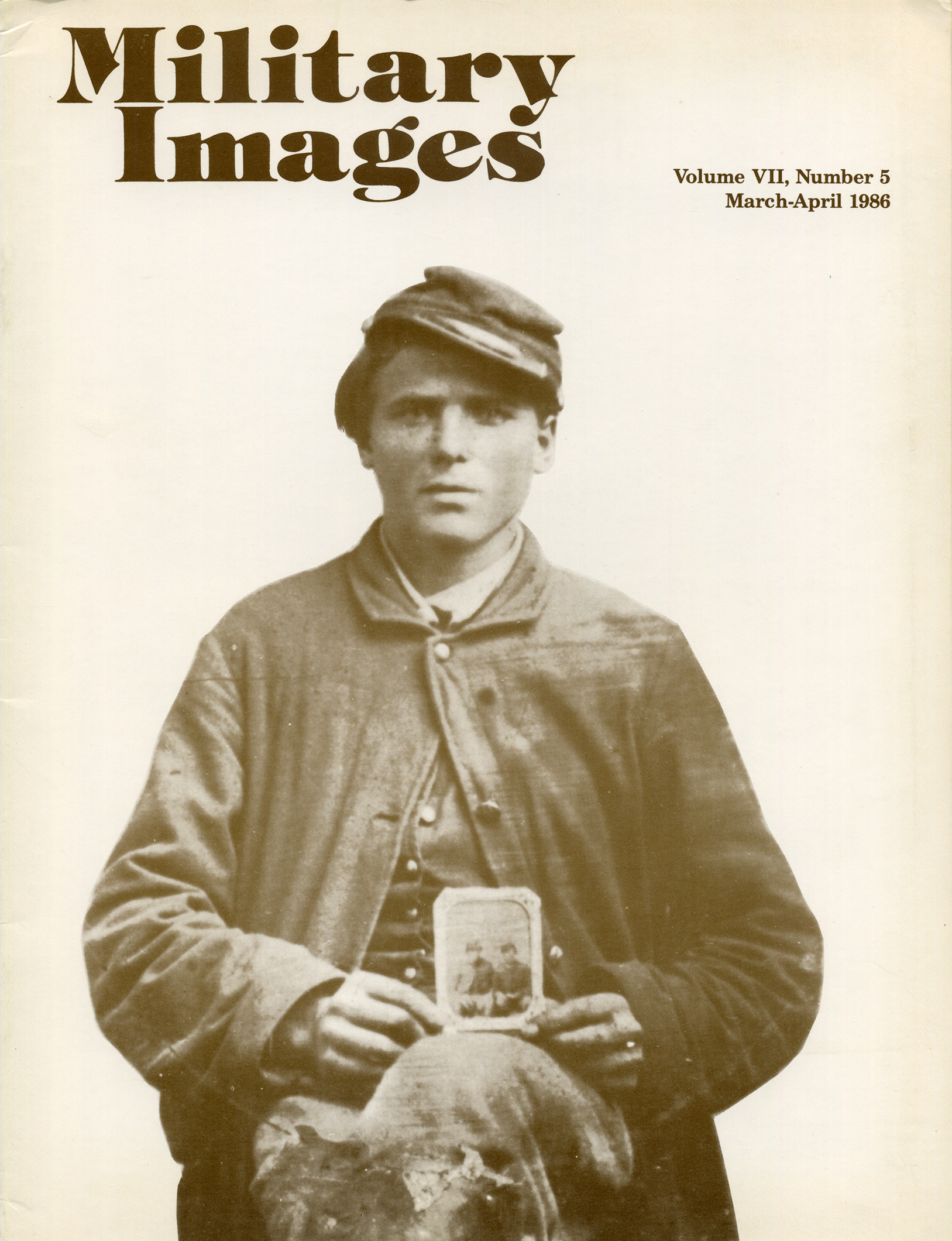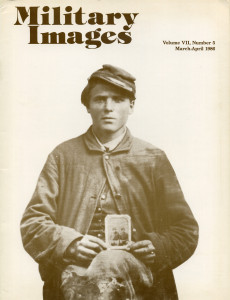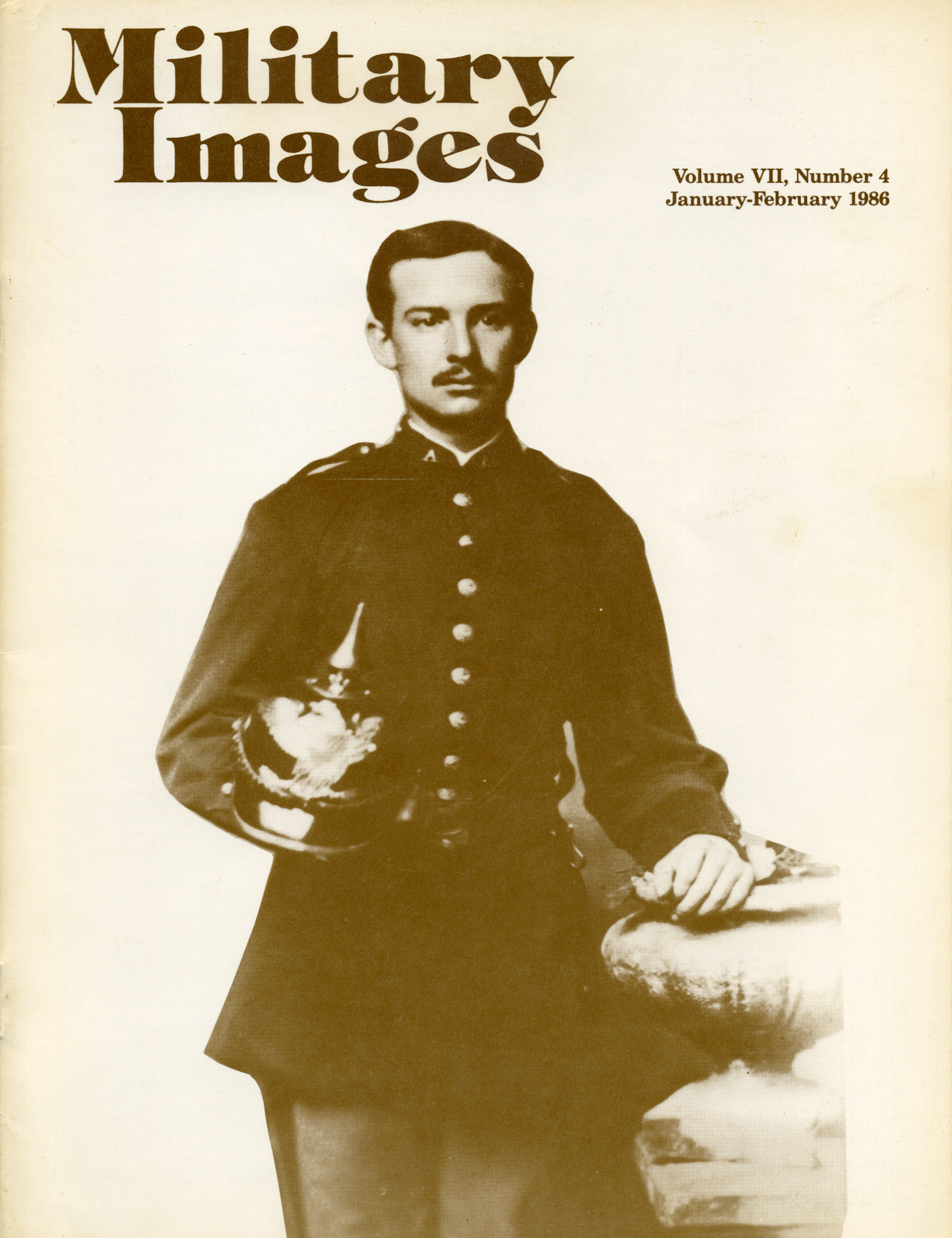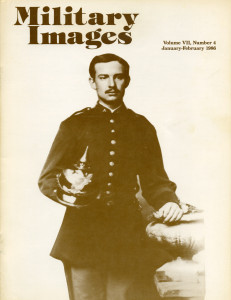The complete issue
Vol. XXVI, No. 3
(40 pages)
Print edition: Visit our store to check availability
Digital edition: Visit JSTOR.org to purchase
Subscribe to MI
Explore the MI Archives: Browse | Advanced search | Tutorial
Inside
Cover image
From the collection of Chris Nelson, an unusual unidentified trick photography carte de visite by J. Jones, Rendezvous of Distribution, Va.
Table of Contents (p. 1)
Editor’s Desk (p. 2)
The editor is gratified by the overwhelmingly positive response to the recent Georgia issue and notes that an Ohio-themed state issue will be featured next.
Passing in Review (pp. 4-5)
Two books are reviewed and both are recommended. Faces of the Civil War: An Album of Union Soldiers and Their Stories by Ronald S. Coddington offers “valuable insights into the experiences of seventy-seven Union ‘faces of war.’” Great Maps of the Civil War, Pivotal Battles and Campaigns Featuring 32 Removable Maps by William J. Miller is a “handsomely produced volume” that is well-researched and colorful.
The Flag of the 17th Texas Consolidated Cavalry by John Sickles (pp. 6-7)
A photograph taken at Lufkin, Texas, on Sept. 21, 1929, depicts the bullet and shell torn flag of the regiment held by two of its veterans, W.P. Fears and E.W.H. Parker. A one-page history of the 17th is included.
“Slow Trot” Thomas Between Wars: Accurately Dating an Antebellum Image by Gregory J.W. Urwin (pp. 8-11)
An 1853-1854 daguerreotype by Mathew B. Brady of future Civil War Gen. George Henry Thomas pictures the officer as a brevet major in the 3rd U.S. Artillery. A three-part narrative accompanies the image. “The Man” is a biographical sketch of Thomas from his beginnings in Virginia to his rise to fame as “The Rock of Chickamauga” and his post-war years. “The Image” is a physical description of the image and case. “Dating the Image” is a description of how the author, a professor of history at Temple University, concluded that the image was made by Brady in the 1853-1854 timeframe—a year earlier than the 1855 date given by the curator of photographs at the National Portrait Gallery in the late 1970s.
The 12th Kansas Infantry “Jayhawkers” by J. Dale West (pp. 12-17)
An album of 25 soldiers who served in the regiment includes 8 identified men: 1st Lt. William A. Welles of Company C, Capt. Nick L. Benter of Company C, Sgt. Maj. Clarkson Reynolds, 1st Lt. and Regimental Quartermaster Joshua Clayton, 2nd Lt. Samuel S. Kirkham of Company C, 1st Lt. William B. Nichols of Company C, Pct. Enos Ingle of Company D and Brig. Gen. John Edwards.
The Death of John Kent C.S.A. by Mahlon Nichols (p. 18)
A biographical sketch of Kent, a private in the 2nd Missouri Infantry, includes a touching obituary with his final words, “I die in a good cause; tell my friends good-bye.” The sketch is illustrated with a hard-plate image of Kent in civilian dress.
“Red,” The Story of Lt. James D. Bebout: Gridiron Star, All-American Hero by John W. Turner (pp. 19-21)
A standout football player at Penn State from 1910-1914, Bebout graduated with a degree in agriculture and went to work for the federal government. After war was declared against Germany during World War I, he joined the U.S. army as an officer and was assigned to Company D of the 318th Infantry of the 80th Division. In May 1918, Bebout sailed for France with his division. Four months later, on Sept. 29, he was killed during the fighting at Bethincourt. Included in the story is a 1919 letter written by Bebout’s friend and fellow officer, Capt. E.C. Shively. It describes Bebout’s death and other wartime reflections of the late Penn State star.
Contributions to the War Effort from Shrewsbury, New Jersey by Thomas J. Moeller (pp. 23-25)
The identities of the veterans pictured in a circa 1884 photograph of the members of Grand Army of the Republic Post 61 in Shrewsbury, N.J., are not known. The author however has a list of the names of all the membership, and notes that “their personal stories run the spectrum of New Jersey’s military service during the Civil War. Several stories follow, with wartime images of 2nd Lt. William Conover and 1st Lt. William H. Foster of the 14th New Jersey Infantry and Capt. Samuel Tucker Sleeper of the 11th New Jersey Infantry.
William Worth Belknap, Fallen Hero by Thomas Gaard (pp. 26-31)
Belknap, the author states, “is best known as the Secretary of War in the Grant Administration. He was charged with corruption, resigned his position and was impeached by the House of Representatives.” His fall from grace overshadows a distinguished war record that includes the Battle of Shiloh, during which he suffered a serious wound, and the campaigns of Vicksburg and Atlanta. Belknap’s story is illustrated with an early war albumen print of him as an officer in the 15th Iowa Infantry, an image of Belknap as a brigadier general with two orderlies, a group portrait of the general with his staff officers and other images.
Uniforms & History by Michael J. McAfee (pp. 32-33)
In the “165th New York Volunteer Infantry, 1862-1865, Second Duryea Zouaves,” McAfee recounts the history of the regiment and describes their distinctive uniforms. Three portraits are included, an unidentified private, 1st Lt. Gustavus F. Linquist and 2nd Lt. Charles Carville.
Stragglers (p. 34-38)
A total of 16 images are featured—Nine from the Civil War, one from about 1901, and six from World War I. Several of the latter portraits are identified. The identities of two of men in a group of nine generals in a circa 1918-1919 portrait are known: Benjamin Foulois, Chief of the Air Service, AEF, and Manus McCloskey, a field artillery brigade commander in the 77th Division. Other identified men included a Japanese-American Doughboy, Pvt. Hatsuko Kasagi, Pvt. Stephen Savko of the Medical Department of Base Hospital #80 and Pvt. Frank Berkavich.
Sutler’s Row (p. 39-40)

